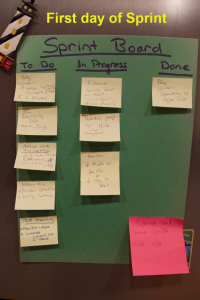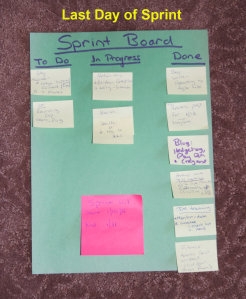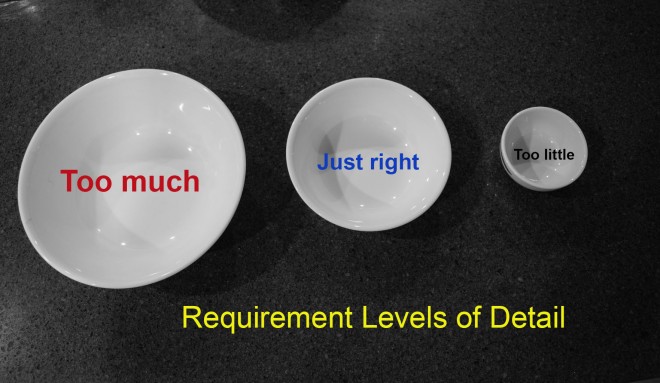You want me to change?
What a simple but profound question to ask. What a bold request to make.
Change is hard. Change is painful. Why do I need to Change?
In the spirit of being Agile, I’d rather talk about adaptive transformation. It sounds so much more fun and interesting!

Looking back in my blog archives, I realize that I have dipped my toe into this topic a few times in articles like “A Tower of Change” and “Dying to Adapt”. I was having fun with my Tarot cards in late 2016 and the Death and Tower cards kept showing up so I reflected on them and wove them into the chaotic current events of the day. “A Matter of Perspective” and a few other articles also danced around this difficult and daunting theme.
As I watch the train wreck that has become our nation’s political discourse, I am concerned that people are losing the ability to communicate with each other. How we converse and share information has changed so rapidly and dramatically in just 10 years that it makes my head spin.

The Facebook and Twitter threads I see today make me wonder, are we able to “change” another person’s mind or position on anything?
As witnessed on social media every day, I don’t see much give and take on ideas where people disagree. I see a whole lot of confirmation bias and reinforcement of one’s existing views and values. I see many instances of digging in on positions and not much changing or adapting.
Why is it so hard to Change?
If I called you live on the phone right now and asked you to describe what change feels like, what would you say?
For me and many others the adjectives painful, stressful and uncomfortable would probably top the list.
The DailyOM blog by Madison Taylor sent me an article last week titled “Anxiety about Change”. It seems to be on the minds of many people.
Change is Difficult. No Pain, No Gain, right? Every competitive athlete understands this mantra but most people’s default setting is to take the path of least resistance. The easy way and the status quo are like a close, dysfunctional couple and breaking up is hard to do!
At work I keep hearing the words and phrases Transformation, Agile Maturity, Accelerators and Radical Change being used in the context of staying competitive and relevant in the market. Being a disruptive Change Agent is a good thing in today’s world and it is being rewarded with dollars, likes and followers. Adaptive transformation is sometimes critical to one’s survival.
If change is such an important aspect to survive in this world, why is it so hard?
Why do humans usually respond to change with the reflective impulse to resist it?
Most of our major change of life events are made easier and less stressful with rituals and ceremonies that typically involve the abundant intake of food and/or alcohol.
Think about graduation parties, weddings, bar mitzvahs, and funeral repasts. These are all times of big and scary change.
Evolve or die may seem a bit extreme but is an understood reality in our competitive business and technology world today. Remember what happened to Kodak moments and our once beloved Blackberry devices. They didn’t transform quickly enough and now they are a footnote in history.

In more tame Agile terms, the iterative process of Build, Test, Inspect and Adapt is a continuous and beautiful flow of events that occurs over and over in short time increments (sprints). This flow makes change easier since it is done is smaller chunks (think baby steps).

Playdough and Juggling Balls displaying Incremental Change
And if you fail, it is best to Fail Fast and start sprinting again.
I’ll close with the wise words of Ray Dalio from his book “Principles” where he states:
“Evolution is good because it is a process of adaption that generally moves things toward improvement.”
“The faster one appropriately adapts, the better.”
I also appreciate Mr. Dalio’s equation: Pain + Reflection = Progress
The question is: Are we ready to embrace the discomfort and potential failure so that we can change and get to a better place?
Are we open to adaptive transformations to get us to a higher level?
None of my questions have simple, easy answers but I do think that if we strive to keep our lenses clear and both eyes open like I discuss in “A View on Balance” and “A Matter of Perspective“ then perhaps we can frame our challenges in a new light and take the small, incremental steps to evolve to a different and better way.
Looking at an issue or a challenge from a completely different angle can help us adapt and evolve to improve the situation.

On the topic of changing other people’s views and opinions on Social Media – upon further reflection, I don’t see this as a reasonable or easily attainable goal and will instead focus on changing myself in the hope that others will see my values in action.
So let’s hear it for real live Adaptive Transformations!
Taken in smaller, bite-sized chunks, change doesn’t have to be so painfully hard.
Fun footnote:
The title of this blog is the chorus of this catchy tune by the group Churchill.
Click here for the fun and cool video of the song “Change”.
I listened to this tune while writing these words and it gave me additional motivation and inspiration. It greased the skids in my mind and helped me get unblocked. Maybe it can do the same thing for you.






















